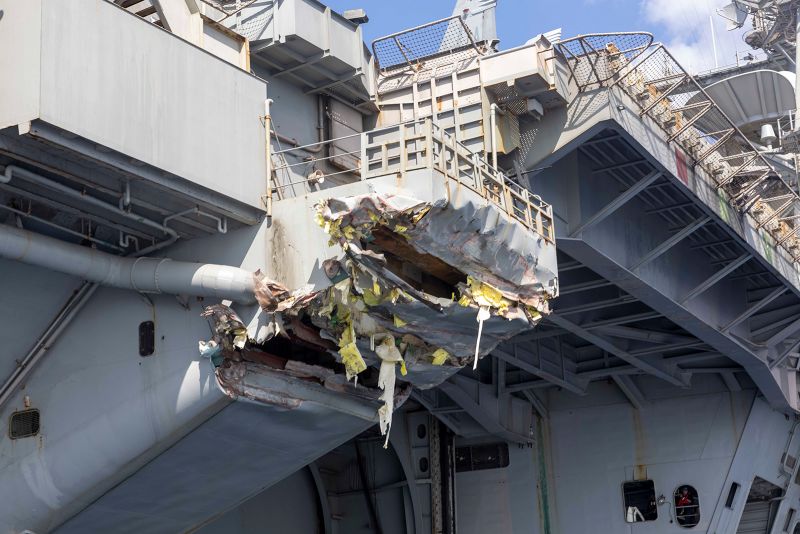
New photos show damage to US aircraft carrier after collision
New photos show the damage to a US Navy aircraft carrier sustained in a collision with a merchant ship last week.
The warship USS Harry S. Truman docked at a US naval facility in Souda Bay, Greece, for repairs over the weekend following the incident near the entrance to the Suez Canal.
Photos released by the Navy on Saturday show damage to the exterior starboard quarter of the 1,100-foot-long, nuclear-powered aircraft carrier.
Damaged areas included “the exterior wall of two storage rooms and a maintenance space … a line handling space, the fantail, and the platform above one of the storage spaces,” the Navy said in a statement.
None of the damage affects the ship’s combat capability, the statement said, adding that it has conducted flight operations since the accident last Wednesday night.
A team including structural engineers and naval architects is conducting a detailed assessment of the damage and would implement a repair plan, the Navy said, without offering a timetable for the repairs.
The Truman collied with the Besiktas-M, a Panamanian-flagged, 617-foot (188-meter) long bulk carrier, in the crowded waters near the Suez Canal off Egypt’s Port Said in the Mediterranean Sea.
The merchant ship was also damaged, but no injuries were reported on either vessel, the Navy said following the collision near a crowded anchorage for ships transiting the canal.
Former US Navy captain Carl Schuster, an instructor at Hawaii Pacific University, said such conditions leave little room for error.
“There is not a lot of room for maneuvering in a restricted seaway, and both ships require about one nautical mile to stop,” Schuster said.
Small navigation mistakes, misreading of the other ship’s intentions or delayed decision-making from the crew of either ship could have put them in danger quickly “with very few viable options,” Schuster said.
Before the accident, the Truman was in Souda Bay for a “working port visit” after two months of combat operations in the Central Command region, a Navy statement said.
During that time, it conducted multiple strikes against Houthi rebels in Yemen and launched airstrikes against ISIS in Somalia, the Navy said.
Rear Adm. Sean Bailey, commander of the Truman’s carrier strike group, which includes a guided-missile cruiser and three destroyers, said it remains operational across the region.
“Our mission has not changed and we remain committed to responding to any challenge in this dynamic and global security environment,” Bailey said in a statement.
